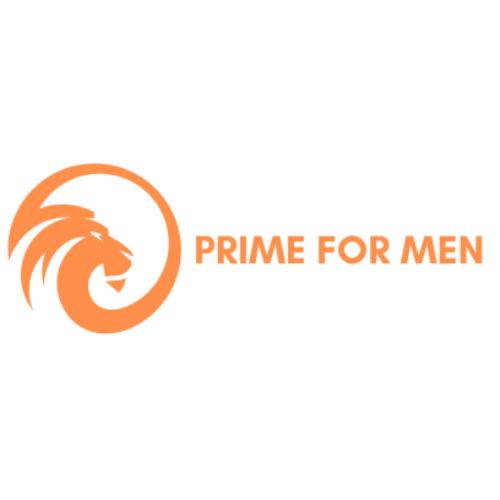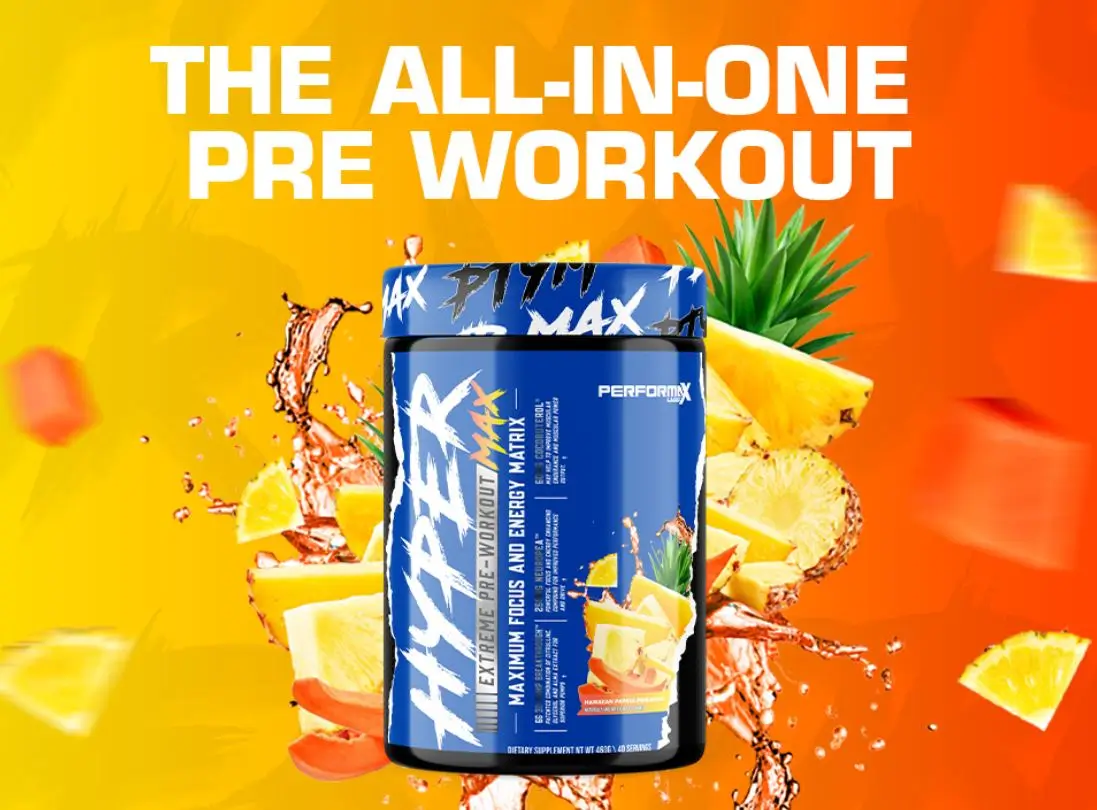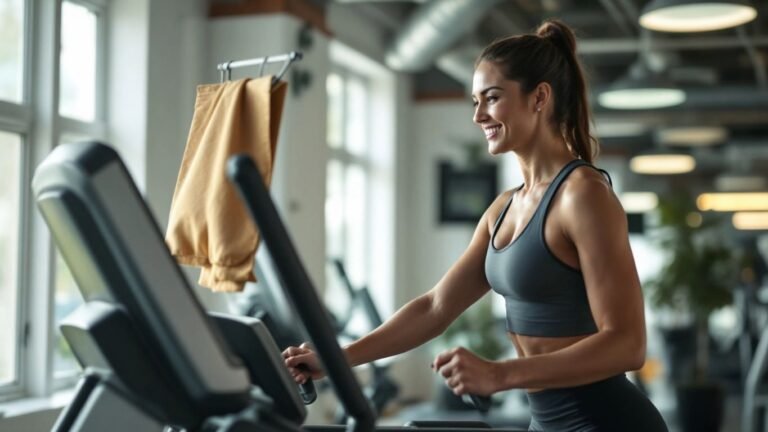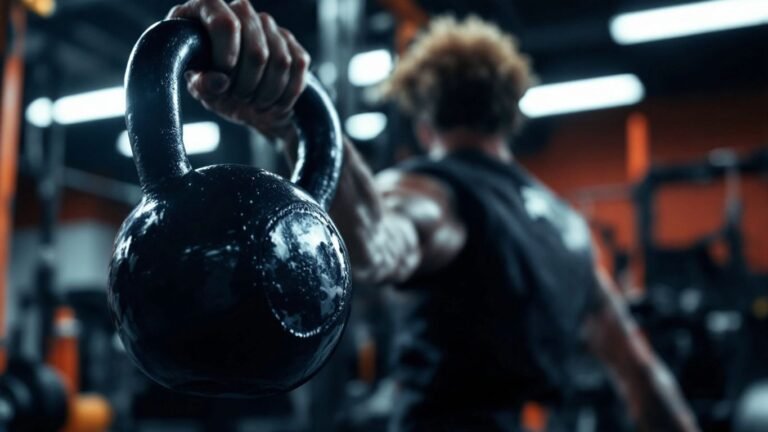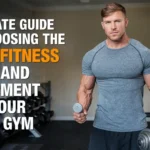🚀 Discover the Secret to Unstoppable Energy and Strength! 💪
- ✔️ Boosts natural testosterone levels for improved energy and strength.
- ✔️ Enhances muscle growth and recovery from workouts.
- ✔️ Supports mental clarity and overall vitality.
- ✔️ Promotes better sleep quality and stress reduction.
- ✔️ Clinically-tested ingredients with a strong safety profile.
Disclaimer: This page contains affiliate links. If you purchase through these links, I may receive a small commission at no additional cost to you.
Table of Contents
Top 5 Key Takeaways from Core Workout Routine
- Comprehensive Core Training: Target all core muscles, including abs, obliques, and lower back, for overall strength and stability.
- Varied Exercises: Incorporate exercises like planks, crunches, and bicycle crunches to engage different muscle groups and maintain interest.
- Minimal Equipment Needed: Effective core workouts can be done with little to no equipment, making them accessible at home.
- Progression for All Levels: Start with beginner exercises and gradually move to advanced routines as strength improves.
- Balance and Posture Benefits: Strong core muscles enhance balance, posture, and reduce the risk of injury.
Looking to build a stronger, leaner physique?
Look no further than our core-workout routine. By targeting the core muscles, this routine can help improve overall fitness and contribute to a more toned, athletic appearance.
Whether you’re a seasoned gym-goer or just starting out, our core-workout routine is designed to challenge and enhance your core strength, no matter your fitness level.
But what are the core muscles, and why are they so important?
Read on to learn more about the anatomy of the core muscles and how they contribute to overall fitness and health.
Understanding the Core Muscles
Your core muscles are a complex group that includes far more than just your abs. They encompass several interconnected muscles that extend from your back down to your butt and front and inner thighs.
These muscles are the epicenter of your body’s strength, including the abdominals, obliques, lower back muscles, and even those around the pelvis.
Importance of Core Strength
The core is crucial for stabilizing the body, acting as the link between your upper and lower body. Strong core muscles are vital for maintaining proper posture, reducing the risk of back pain, enhancing balance and stability, and facilitating everyday functional movements.
This makes them essential not just for athletes, but for everyone.
Core Muscles and Daily Life
Core strength plays a pivotal role in routine activities like bending, twisting, and playing sports. Additionally, these muscles are integral to breathing and the function of the diaphragm.
Good core strength enhances your ability to perform everyday tasks more efficiently and with less risk of injury.
Beyond Aesthetics: Deep Core Muscles
While often associated with a toned belly or six-pack abs, the core is much more than superficial muscles. Deeper muscles like the transverse abdominis and multifidus are crucial for core stability.
They play a more significant role than the more visible muscles like the rectus abdominis.
Training the Core Muscles
Strengthening your core doesn’t necessarily require gym equipment.
Simple exercises like planks, bridges, and crunches are effective. Activities such as Yoga and Pilates focus on controlled movements and spine alignment, making them excellent for building core strength.
Core-Workout Equipment
Performing core-workouts can be done with little to no equipment, but there are several options available to add variety and challenge to your routine.
Core stability exercises are designed to improve the strength and endurance of these muscles, helping you to perform everyday activities with greater ease and reducing your risk of injury.
By building a strong core, you can improve your balance, posture, and overall athletic performance.
| Equipment | Benefits |
|---|---|
| Dumbbells or Kettlebells | Add resistance to core exercises for increased strength and calorie burn. |
| Resistance Bands | Provides varied resistance levels and can target specific muscles. |
| Stability Ball | Provides an unstable surface for core exercises, engaging more muscles and improving balance. |
| Ab Roller | Targets the entire core, particularly the rectus abdominis muscle. |
| Gymnastic Rings | Provides a challenging workout for the core muscles while improving grip strength. |
Core-Workout at Home
While gym equipment and machines can add variety to your core-workout routine, you don’t need them to strengthen your core muscles.
Bodyweight exercises are just as effective and can be done in the comfort of your own home.
| Exercise | Instructions |
|---|---|
| Plank | Start in a push-up position with your arms straight and your body forming a straight line from head to heels. Hold this position for as long as you can. Repeat for 3 sets. |
| Crunch | Lie down on your back with your knees bent and feet flat on the floor. Place your hands behind your head, lift your head and shoulders off the ground, and curl towards your knees. Hold for a second, then slowly lower back down. Repeat for 3 sets of 10-12 reps. |
| Bicycle Crunch | Lie down on your back with your knees bent and hands behind your head. Lift your head and shoulders off the ground and bring your left knee towards your right elbow while straightening your right leg. Then switch sides, bringing your right knee towards your left elbow while straightening your left leg. Repeat for 3 sets of 10-12 reps. |
| Reverse Crunch | Lie down on your back with your hands by your sides. Bring your knees towards your chest, then lift your hips off the ground while bringing your knees towards your head. Lower back down to starting position. Repeat for 3 sets of 10-12 reps. |
Remember, it’s important to engage your core muscles and maintain proper form during these exercises to maximize their effectiveness. Don’t rush the movements and focus on your breathing.
For an extra challenge, you can also try adding in some modifications such as leg raises, side planks, and mountain climbers. And don’t forget to stretch your core muscles after your workout.

Disclosure: Some of the links in this article may be affiliate links, which can provide compensation to me at no cost to you if you decide to make a purchase using the links. These are products I have personally used and stand behind. By using the affiliate links, you are also helping support this website.
Core-Workout for Beginners
If you’re new to exercising or just starting to incorporate core-workouts into your routine, it’s important to start with foundational exercises that build strength gradually.
Beginner-friendly core-workout routine to get you started
| Exercise | Repetitions |
|---|---|
| Plank | 3 sets of 20 seconds |
| Bicycle Crunches | 3 sets of 10 reps per side |
| Bird Dogs | 3 sets of 10 reps per side |
| Dead Bug | 3 sets of 10 reps per side |
| Side Plank | 3 sets of 10 seconds per side |
- Remember to engage your core muscles throughout each exercise and focus on proper form.
- Don’t hesitate to modify or adjust the exercises to fit your fitness level.
- As you build strength and confidence, you can gradually increase repetitions and duration.
Advanced Core-Workout
If you have already built a solid foundation of core strength and are looking to take your workouts to the next level, this advanced core-workout routine is for you.
These exercises will challenge your core muscles further and help you achieve even greater strength and stability.
Exercise 1: Hollow Body Hold
The hollow body hold is an excellent exercise for strengthening the deep abdominal muscles, which are essential for maintaining proper posture and stability.
To perform this exercise:
| Step | Description |
|---|---|
| 1 | Lie on your back on a mat with your legs extended and arms overhead. |
| 2 | Press your lower back into the mat, engaging your core muscles. |
| 3 | Lift your legs off the ground, keeping them straight and together. Your feet should be a few inches above the floor. |
| 4 | Simultaneously, lift your shoulders and arms off the ground, reaching your arms forward towards your feet. Your body should form a hollow shape, like a banana. |
| 5 | Keep your head in a neutral position, not tucking your chin or extending your neck. |
| 6 | Hold this position, maintaining tension in your core and keeping your lower back pressed into the mat. |
| 7 | Breathe steadily throughout the hold, avoiding holding your breath. |
| 8 | Aim to hold the position for as long as possible, starting with shorter durations and gradually increasing as you build strength. |
| 9 | Lower your legs, shoulders, and arms back to the mat slowly and with control when you finish the hold. |
Exercise 2: Russian Twists with Medicine Ball
Russian twists are a great exercise for targeting the oblique muscles, which play a key role in rotational movements.
Using a medicine ball adds extra resistance and engages the core muscles even more.
To perform this exercise:
| Step | Description |
|---|---|
| 1 | Sit on the floor with your knees bent and feet flat on the ground. Hold a medicine ball with both hands in front of your chest. |
| 2 | Lean back slightly to engage your core muscles, keeping your back straight and not rounded. |
| 3 | Lift your feet off the ground, balancing on your sit bones. Keep your legs together and slightly bent. |
| 4 | Hold the medicine ball close to your chest. |
| 5 | Rotate your torso to the right, bringing the medicine ball beside your right hip. |
| 6 | Return to the center, then rotate your torso to the left, bringing the medicine ball beside your left hip. |
| 7 | Continue alternating sides, twisting from your waist and keeping your core engaged. |
| 8 | Aim to touch the medicine ball to the floor on each side if possible. |
| 9 | Perform the exercise for a set number of repetitions or a specific duration, maintaining steady and controlled movements. |
Exercise 3: Plank with Alternating Leg Lift
The plank is a classic core exercise that engages all the major core muscles.
Adding a leg lift challenges the stability of the plank and further engages the lower abdominals and glutes.
To perform this exercise:
| Step | Description |
|---|---|
| 1 | Start in a push-up position with your arms straight and hands directly under your shoulders. |
| 2 | Keep your body in a straight line from head to heels, engaging your core muscles to maintain this position. |
| 3 | Ensure your feet are hip-width apart for stability. |
| 4 | Lift your right leg off the ground, keeping it straight and engaging your lower abdominal and glute muscles. |
| 5 | Hold the leg lift for a few seconds, maintaining the plank position without letting your hips drop or rise. |
| 6 | Lower your right leg back to the starting position slowly and with control. |
| 7 | Repeat the lift with your left leg, holding it for the same duration. |
| 8 | Continue alternating leg lifts, performing the exercise for a set number of repetitions or a specific duration. |
| 9 | Ensure you maintain proper plank form throughout the exercise, keeping your core tight and body aligned. |
Perform each exercise for the recommended number of sets and reps, resting as needed between sets.
Remember to maintain proper form and engage your core throughout each exercise.
With consistency and effort, this advanced core-workout routine will help you achieve even greater core strength and stability.
Core-Workout for Athletes
Athletes require a strong and stable core to perform at their best and reduce the risk of injury.
In addition to traditional core exercises, sport-specific movements can be incorporated to enhance performance in a particular sport or activity.
For example, swimmers can benefit from exercises that mimic the body’s rotational movement during a stroke, such as the Russian twist with a medicine ball.
Basketball players can perform exercises that simulate jumping and landing, such as single-leg squats with a medicine ball twist. Runners can benefit from exercises that improve lateral stability, such as the side plank with leg lift.
It’s important for athletes to train their core muscles in multiple planes of motion, as well as focus on anti-rotational and anti-extension exercises to improve overall stability.
Examples of anti-rotational exercises include the Pallof press and the bird dog, while anti-extension exercises include the plank and the hollow hold.
Core-Workout for Posture
Good posture is critical for overall health, and a strong core is essential for improving and maintaining it.
The following exercises target the muscles responsible for maintaining good posture and can help you stand and sit tall.
1. Plank
The plank is a static exercise that targets the entire core, including the muscles responsible for good posture.
- Begin on your hands and knees, with your hands shoulder-width apart.
- Straighten your legs and hold your body in a straight line from your head to your heels.
- Keep your abs engaged and your hips level. Hold for as long as you can, aiming for at least 30 seconds.
2. Bird Dog
The bird dog exercise strengthens the muscles that support the spine and promote proper alignment.
- Begin on your hands and knees, with your hands shoulder-width apart and your knees hip-width apart.
- Extend your right arm forward and left leg backward, keeping your hips level.
- Hold for a few seconds, then return to the starting position and switch sides.
- Repeat for 10 to 12 repetitions on each side.
3. Superman
The superman exercise strengthens the muscles in your lower back and helps promote good posture.
- Begin by lying facedown on the floor with your arms and legs extended.
- Lift your arms, chest, and legs off the floor as high as you can without feeling any pain.
- Hold for a few seconds, then lower back down.
- Repeat for 10 to 12 repetitions.
Remember to maintain proper form during these exercises and avoid any movements that cause pain or discomfort. Consistency is key for improving posture through core-workouts, so try to incorporate these exercises into your routine at least twice a week.
Core-Workout for Balance
Balance is an essential component of overall fitness and is particularly important for older adults to prevent falls. Core-workouts that focus on stability can improve balance by strengthening the muscles that support the spine and hips.
One effective exercise for balance is the single-leg balance.
- Stand on one leg with a slight bend in the knee and engage your core muscles to maintain your balance.
- Hold for 30-60 seconds and then switch to the other leg.
- Repeat for 2-3 sets.
The plank with leg lift is another great exercise for improving balance.
- Begin in a plank position with your forearms on the ground and engage your core muscles to maintain a straight line from head to heels.
- Lift one leg off the ground and hold for 10-15 seconds before switching to the other leg.
- Repeat for 2-3 sets.
Side plank with leg lift is a variation of the side plank and targets the muscles responsible for lateral stabilization.
- Begin in a side plank position with your forearm on the ground and your feet stacked on top of each other.
- Lift your top leg off the ground and hold for 10-15 seconds before lowering it back down.
- Repeat for 2-3 sets on each side.
Incorporating these exercises into your core-workout routine can help improve your balance and overall stability.
Remember to start with the beginner versions of each exercise and gradually progress to more advanced variations.
Core-Workout for Back Pain
Back pain is a common issue that affects people of all ages and fitness levels. Fortunately, incorporating a core-workout routine can help alleviate many types of back pain.
Below are some effective exercises that target the lower back and abdominal muscles.
Superman
- Lie face down on the ground with your arms and legs extended.
- Slowly lift your arms, chest, and legs off the ground, holding for a few seconds before lowering back down.
- Repeat for 10-12 reps.
Plank
- Begin in a push-up position with your forearms resting on the ground.
- Hold for 30 seconds to 1 minute, keeping your back straight and core engaged.
- Repeat for 3-4 sets.
Bird Dog
- Start on your hands and knees with your core engaged.
- Extend your right arm and left leg simultaneously, keeping your back straight.
- Return to the starting position and repeat on the opposite side.
- Do 10-12 reps per side for 3-4 sets.
Bridge
- Lie on your back with your knees bent and feet flat on the ground.
- Lift your hips up towards the ceiling, squeezing your glutes and engaging your core.
- Hold for a few seconds before lowering back down.
- Do 10-12 reps for 3-4 sets.
Remember to warm up before starting any exercise routine and consult with a healthcare professional before starting if you have any existing back issues.
Core-Workout for Weight Loss
When it comes to weight loss, incorporating core-workouts into your routine can play a major role in achieving your goals. While spot reduction is not possible, targeting the core muscles can help increase overall calorie burn and promote lean muscle development, which can lead to a more toned and defined physique.
Effective core exercises for weight loss include those that engage multiple muscle groups, such as plank variations, mountain climbers, and Russian twists. These exercises not only work the abs but also engage the arms, shoulders, and legs, providing a full-body workout that can help boost metabolism and burn fat.
It is important to note that core-workouts alone will not lead to significant weight loss. To truly see results, a combination of regular exercise, a healthy diet, and lifestyle modifications is necessary.
For optimal weight loss benefits, aim to incorporate core-workouts into your routine at least 2-3 times a week. Be sure to allow for proper rest and recovery time between workouts to prevent injury and maximize results.
Incorporating core-workouts into your weight loss routine may take some time to get used to, but stick with it and you’ll see progress in no time!

Disclosure: Some of the links in this article may be affiliate links, which can provide compensation to me at no cost to you if you decide to make a purchase using the links. These are products I have personally used and stand behind. By using the affiliate links, you are also helping support this website.
Core-Workout Tips
While the benefits of core-workouts are undeniable, it’s important to approach them with a strategy to ensure maximum effectiveness and avoid injury.
Here are some tips to help you optimize your core training:
- Start gradually: If you’re new to core-workouts, start with basic exercises and gradually increase the intensity and duration. Overexerting yourself can lead to injury and make it harder to stick to your routine.
- Focus on form: Proper form is crucial to avoid injury and ensure you’re targeting the right muscles.
- Pay attention to your posture and engage your core muscles throughout each exercise.
- Don’t neglect other muscle groups: While core-workouts are important, it’s essential to also incorporate exercises that target other muscle groups for overall fitness and balance.
- Take breaks: Allow your body to rest and recover between workouts to prevent overuse injuries and give your muscles time to rebuild.
- Vary your routine: Incorporate different exercises and equipment to challenge your muscles and prevent boredom. This can also help prevent plateauing and ensure continued progress.
- Stay motivated: Set achievable goals and track your progress to stay motivated and engaged with your routine.
- Consider finding an accountability partner or joining a fitness class to stay on track.
Frequency
How often you should perform core-workouts depends on your fitness goals and current level of fitness.
For beginners, starting with one or two sessions per week and gradually increasing to three or four is a good approach.
More experienced individuals can aim for four to six core-workouts per week.
Rest Periods
Rest periods are crucial for allowing your muscles to recover and rebuild.
Aim for 30-60 seconds of rest between sets and 48 hours between intense core- workouts to allow for proper recovery.
Progressions
As you get stronger, it’s important to progress your exercises to continue challenging your muscles.
This can include adding weight, increasing reps or sets, or incorporating more difficult variations of exercises.
By following these tips, you can ensure that your core training is effective, safe, and sustainable.
FAQ Section
1. How often should I do core-workouts?
It’s recommended to do core-workouts at least two to three times a week. However, it’s important to listen to your body and avoid overtraining.
2. Can I do core-workouts every day?
While it is possible to do core-workouts every day, it’s important to give your muscles time to rest and recover. It’s recommended to incorporate rest days into your workout routine and avoid working the same muscle group on consecutive days.
3. How long should a core-workout last?
A core-workout can last anywhere from 10 to 30 minutes, depending on your fitness level and goals. It’s important to prioritize quality over quantity and focus on proper form and technique.
4. Can I do core-workouts without equipment?
Yes, it’s possible to do effective core-workouts without equipment by incorporating bodyweight exercises such as planks, sit-ups, and crunches. However, adding resistance or using equipment can help increase the intensity and effectiveness of your workouts.
5. What are the best core exercises for beginners?
The best core exercises for beginners include the plank, bird-dog, and glute bridge. These exercises are low-impact and can help build a strong foundation for more advanced exercises.
6. How long does it take to see results from core workouts?
The time it takes to see results from core workouts varies depending on factors such as frequency, intensity, and consistency. However, incorporating regular core workouts into your fitness routine can lead to noticeable improvements in strength, posture, and overall fitness over time.
Related Blog Posts about Core-Workouts

Enhance Your Fitness with Core Stability Exercises
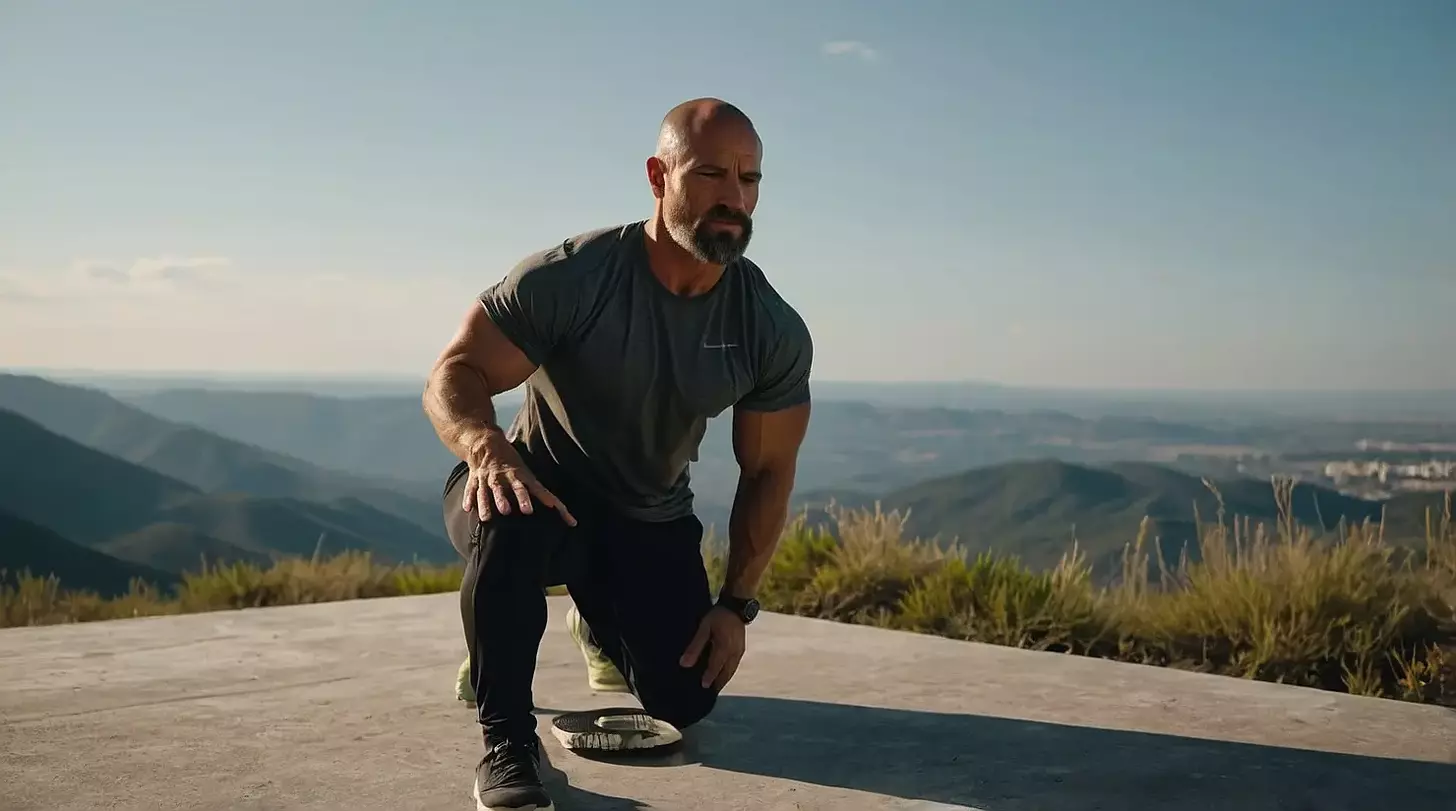
Top Core Flexibility Exercises for Improved Mobility
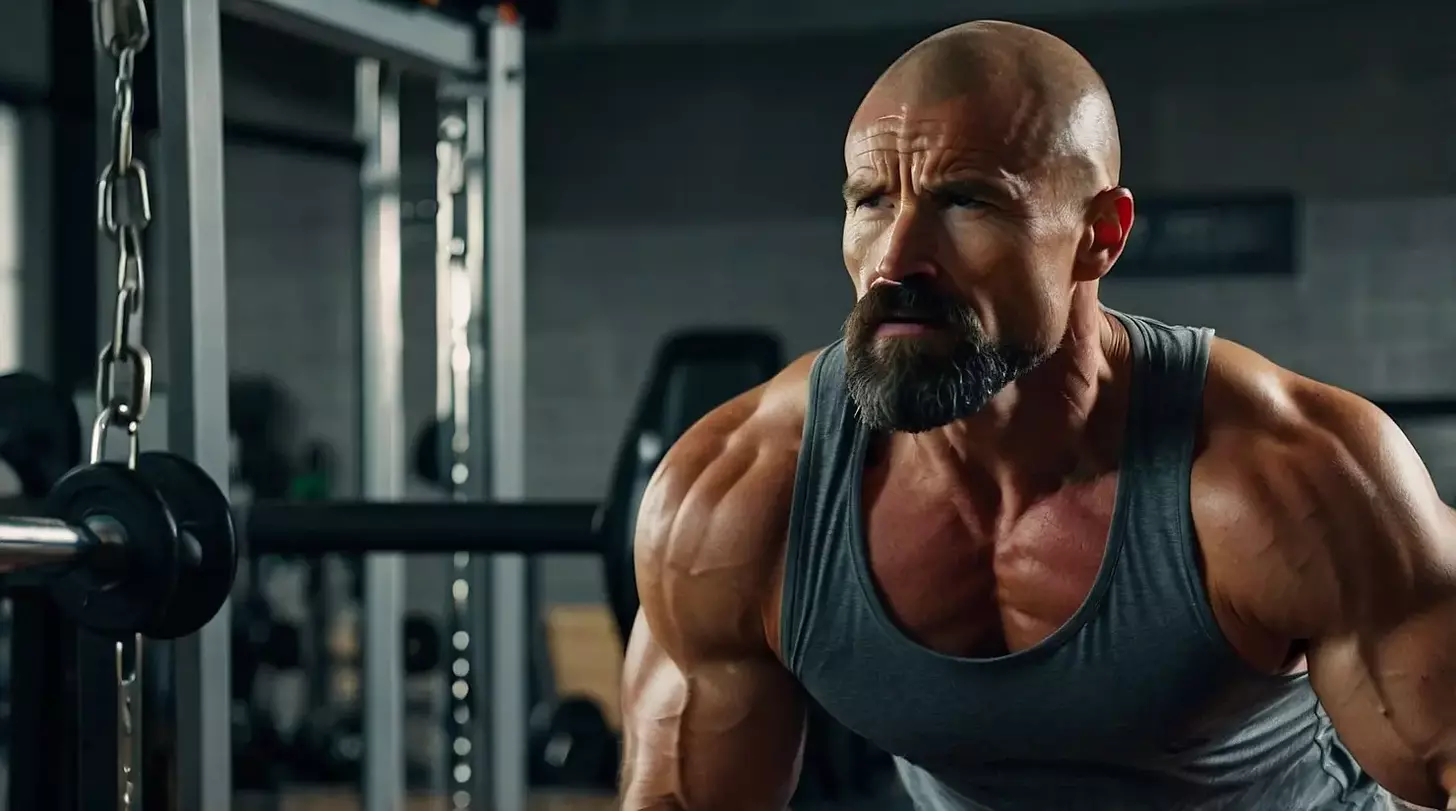
Effective Core Workouts for Weight Loss Results

Core Workouts for Runners: Essential Exercises

Core Workouts for Swimmers: Optimize Performance

Get Stronger and Leaner with Our Core-Workout Routine
🚀 Discover the Secret to Unstoppable Energy and Strength! 💪
- ✔️ Boosts natural testosterone levels for improved energy and strength.
- ✔️ Enhances muscle growth and recovery from workouts.
- ✔️ Supports mental clarity and overall vitality.
- ✔️ Promotes better sleep quality and stress reduction.
- ✔️ Clinically-tested ingredients with a strong safety profile.
Disclaimer: This page contains affiliate links. If you purchase through these links, I may receive a small commission at no additional cost to you.
